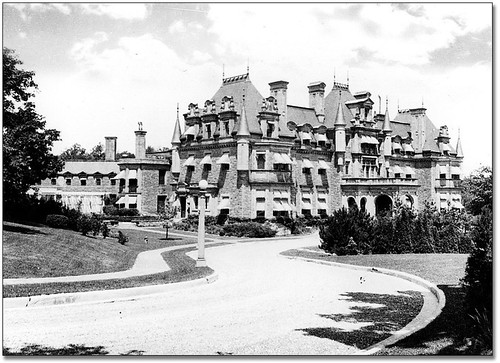

Casa Loma may be Toronto’s favourite and best-known castle, but chateaus still abound. The chateau style was used all over the world, most often for private estates, hotels, and train stations. In this regard Toronto was no different. The style enjoyed a long run of popularity in Canada from 1880 to 1940. Toronto and almost all major Canadian cities can boast at least one good example of the style, lending its iconic status to this country. In Toronto it is even enjoying something of a revival (though often falling short of most originals). “Faux Chateaus” are appearing in upscale Toronto neighbourhoods, with Forest Hill and the Bridle Path leading the pack.
The style is derived from France’s Loire Valley where, during the reign of Francois I (1515-1547), Italian Renaissance Classicism and French medieval architectural forms blended together to create the familiar chateaus. The combination of classical details and medieval towers and turrets are what make these buildings stand out, in addition to the white stone and contrasting dark slate shingles most often used in their construction. Characterized by a high, steep roof and punctuated by numerous dormer windows, the massing is broken up with towers, turrets, and finials. The scale is usually monumental and the materials high-quality. Windows and doors were trimmed with classical or gothic details.
Transported to North America, the style evolved but didn’t waver greatly from the original. In Canada it became the preference of Canadian Pacific Railways to build their hotels and stations in this style. The monumental scale suited the railway barons, resulting in numerous examples across the country. From the Chateau Frontenac in Quebec City (1892) to the Empress Hotel in Victoria (1908), the style was designed to impress. Toronto’s Royal York Hotel (1929) is a late but no less worthy example.
The most academically accurate chateau style structure in Toronto was Chorley Park (1911-1915) in Rosedale. Designed by Frances R. Heakes, the massive house looked like it had been plucked from the Loire Valley and dropped at the top of Glen Road. It was built as the residence of the Lieutenant Governor of Ontario. “Government House” was sold in 1937 and eventually torn down in 1961. Today it is a city park where the curious can still find the old bridge to the forecourt, the estate’s only remaining physical trace.
The federal government used the characteristics of the chateau style for numerous federal buildings in the first half of the 20th century. Often, this involved the use of coarser stonework or brick, and used fewer embellishments while retaining the monumental scale. The slight paring down of the style also made loose references to French Colonial Canada. Ottawa has more than its fair share of this vein of the style with the Confederation building and Supreme Court as examples.
The eventual transition into less monumental buildings meant that in the ’20s and ’30s smaller houses and even gas stations could use a turret without looking pretentious. The Joy Gas Station (one of my favourite buildings in Toronto), originally at Lake Shore and Winderemere and now located south of Lake Shore in the park, is a prime example of the latter. Other Toronto examples from different decades include the Confederation Life Building (1891) at Yonge and Richmond, the Oddfellows’ Hall at Yonge and College (1892), the Casa Loma Stables, and the Runnymede Library (whose totem-like forms flanking the front door are a unique Canadian embellishment).
Modern (and over-the-top) examples in upscale Toronto neighbourhoods (like the Bridle Path) also exist but have nothing on the originals. The Magna International headquarters in Aurora is an example of this and a rare modern attempt at a return to the style’s grander side. The sprawling building includes pseudo-French gardens, ornate stonework and even iron-cresting at the peaks of its (oversized) roofs.
Photo of Chorley Park from the Archives of Ontario



4 comments
Time to dig up some of the comments and rationale for trashing Chorley Park and compare it to the calls for new tiles on the Bloor/Danforth subway….
I love Chorley park. It exists in two worlds. On one side it’s all patrician Rosedale, but it’s sort of wild too. It drops off steeply into the Don Valley with no railing or manicured walk. The grass sort just ends, and ether the scrub or edge begin.
And the faint ruins of the house are there.
It’s also interesting that chorley park was built so close the Don Valley Brick Works. I can’t see someone nowadays building an estate house that close to an industrial site.
I talked to some folks who lived in a house nearby, and said their whole house would shake when the brick works dynamited, and cracks and such eventually formed in their walls.